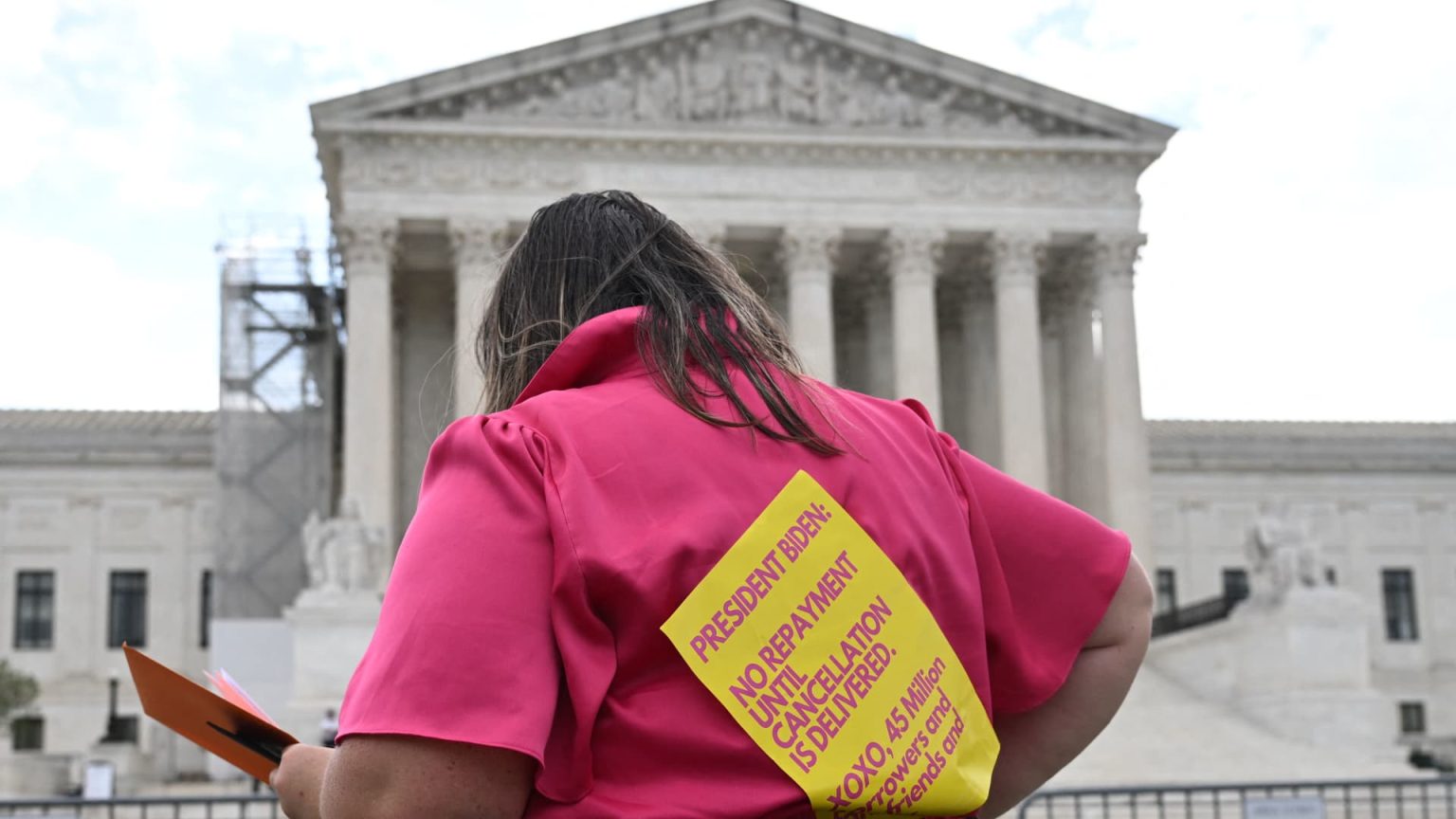The Supreme Court is expected to deliver a ruling on President Joe Biden’s student debt forgiveness plan this week.
Back in February, the Supreme Court heard oral arguments in two lawsuits challenging the plan. Now, as the current term comes to an end, the justices will determine the fate of the program and either pave the way to debt forgiveness for millions or assert that these borrowers should be solely responsible for the loans they took out.
On top of that, federal student loan borrowers have been relieved of making monthly payments on their debts for the last three years, but will have to start paying again this fall. Many are waiting to see if their balances will shrink before that payment is due.
The Biden administration is confident in the legality of its plan to forgive student debt, and has not confirmed whether it is working on a back-up plan in case the nation’s highest court rules against it.
Here’s what’s at stake with the Supreme Court’s decision.
What is the forgiveness plan?
Under Biden’s proposed plan, federal student loan borrowers can have up to $20,000 of their debt forgiven.
Borrowers with federal direct student loans — including graduate Plus loans — who earn less than $125,000 a year ($250,000 a year for couples filing jointly) are eligible to receive $10,000 in loan forgiveness. Those who received Pell Grants are eligible for an additional $10,000.
Around 43 million borrowers stand to benefit from the relief, with 20 million borrowers expecting to see their debt balances completely cleared, the Biden administration said when announcing the plan.
The Education Department briefly accepted applications for the debt relief last fall, and 26 million borrowers were able to submit their information. Around 16 million received approvals before the court challenges prohibited more applications from being processed.
How much will debt forgiveness cost?
When do student loan payments resume?
After a three-year pause, federal student loan interest will resume accruing on Sept. 1 and payments will come due in October.
While borrowers’ monthly payments could be reduced if debt forgiveness is approved, many say they are going to struggle to make their payments as they currently stand.
Around 1 in 5 borrowers have financial risk factors that could make it difficult for them to make their student loan payments when they resume, according to the Consumer Financial Protection Bureau.
While those borrowers may have gotten some breathing room during the three-year payment pause, inflation has made it difficult for them to take full advantage, since the cost of necessities like food and rent have risen steadily since 2020.
DON’T MISS: Want to be smarter and more successful with your money, work & life? Sign up for our new newsletter!
Get CNBC’s free Warren Buffett Guide to Investing, which distills the billionaire’s No. 1 best piece of advice for regular investors, do’s and don’ts, and three key investing principles into a clear and simple guidebook.
Read the full article here




